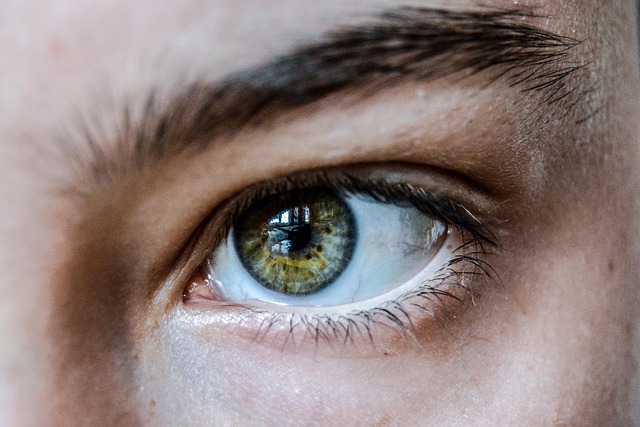Non-surgical skin tightening techniques like RF and HIFU use advanced technologies to stimulate collagen production and target deep layers, offering safe, effective alternatives to surgery for improved elasticity and firmness. These methods, combined with other non-invasive options like thread lifts and chemical peels, provide long-lasting results without downtime, ideal for those seeking youthful skin without incisions. Proper post-treatment care, including sun protection and avoiding specific products, ensures optimal outcomes tailored to individual needs.
“Discover the secret to achieving long-lasting skin tightening without invasive surgeries. This comprehensive guide explores cutting-edge non-surgical techniques that stimulate collagen production, offering a youthful glow and improved skin elasticity. From understanding the science behind collagen stimulation to different approaches and safety considerations, we delve into what works best for various skin types. Learn about patient selection, post-treatment care, and minimally invasive methods, empowering you with knowledge for optimal results in non-surgical skin tightening.”
Understanding Non-Surgical Skin Tightening Techniques

Non-surgical skin tightening techniques have gained significant popularity due to their ability to offer lasting results without invasive procedures. These methods leverage advanced technologies and natural processes to safely and effectively tighten loose or sagging skin, enhancing overall facial and body contour. One such technique is radiofrequency (RF) skin tightening, which uses targeted heat energy to stimulate collagen production, leading to improved skin elasticity and a more youthful appearance.
Another popular approach is the use of high-intensity focused ultrasound (HIFU), which non-invasively targets deep skin layers to break down elastic fibers, triggering the body’s natural healing response. This results in increased collagen synthesis and improved skin firmness. By understanding these non-surgical methods, individuals can make informed decisions about achieving their desired skin tightening outcomes while avoiding the risks associated with traditional surgical procedures.
The Science Behind Collagen Stimulation

The science behind collagen stimulation is a game-changer in the world of non-surgical skin tightening. Collagen, often referred to as the “soul” of our skin, plays a crucial role in maintaining its elasticity and youthful appearance. As we age, natural collagen production slows down, leading to wrinkles and sagging skin. However, innovative treatments like those employing radiofrequency or laser technology can stimulate new collagen growth.
These non-surgical methods work by gently heating the deep layers of the skin, which triggers a natural response from the body to produce more collagen. This process not only improves skin texture but also tightens loose skin, providing long-lasting results. By enhancing collagen stimulation, these treatments offer a safe and effective alternative to surgical procedures, helping folks achieve a firmer, smoother complexion without the hassle and downtime associated with traditional surgeries.
Different Approaches for Lasting Results

Achieving long-lasting skin tightening results involves exploring a variety of non-surgical methods, each with its unique benefits and applications. One popular approach is non-surgical skin tightening, which leverages advanced technologies like radiofrequency (RF) energy and ultrasound to stimulate collagen production and tighten loose skin. These procedures are minimally invasive, offering faster recovery times compared to surgical alternatives.
Beyond RF and ultrasound, other techniques such as thread lifts and chemical peels also contribute to enduring results. Thread lifts involve inserting specialized threads into the skin, which encourage collagen growth and lift the skin from within. Chemical peels, on the other hand, chemically exfoliate the top layers of skin, revealing smoother, tighter skin beneath. Combining these diverse methods can create a comprehensive strategy for achieving and maintaining youthful-looking skin without incisions.
Minimally Invasive Methods: Safety and Efficacy

Minimally invasive methods, such as non-surgical skin tightening treatments, offer a safe and effective alternative to traditional surgical procedures. These advanced technologies utilize focused energy to stimulate collagen production and elastin fibers, leading to improved skin firmness and elasticity over time. Unlike surgery, which involves incisions and recovery periods, non-surgical skin tightening is a quick, outpatient procedure with minimal downtime.
The safety and efficacy of these methods are backed by extensive research and clinical trials. They are designed to target specific areas, providing precise results without impacting surrounding tissues. With continued advancements in dermatology, non-surgical skin tightening treatments offer a promising solution for those seeking long-lasting improvements without the risks associated with surgery.
Patient Selection: Key to Successful Outcomes

Choosing the right candidates is pivotal for achieving optimal results in non-surgical skin tightening procedures. The ideal patient is typically someone with a relatively stable weight, who has completed their significant weight loss or growth spurts, and has realistic expectations. It’s essential to assess individual factors like skin elasticity, tissue quality, and overall health, as these influence the procedure’s effectiveness.
During consultations, healthcare professionals consider age, as skin elasticity decreases over time, and medical history, as certain conditions may affect healing. Understanding these aspects helps tailor treatments, ensuring patients receive suitable procedures for their unique needs, ultimately leading to satisfying long-lasting results.
Post-Treatment Care for Optimal Tightening

After a non-surgical skin tightening procedure, proper post-treatment care is essential for achieving and maintaining optimal results. It’s crucial to follow your dermatologist or healthcare provider’s specific recommendations, as variations may exist based on the treatment method used. Generally, this includes keeping the treated area clean and moisturized. Avoid strenuous activities and hot tubs for a period recommended by your provider, as these can disrupt the healing process.
Additionally, sun protection is paramount. Using a broad-spectrum sunscreen with at least SPF 30 daily helps prevent hyperpigmentation and premature aging, which can negate the tightening effects. Refrain from using certain skincare products, such as retinol or chemical exfoliants, until your provider gives the go-ahead, as these can cause sensitivity or irritation during the healing phase. Remember, consistent care post-treatment contributes significantly to achieving and preserving long-lasting, desirable results.
